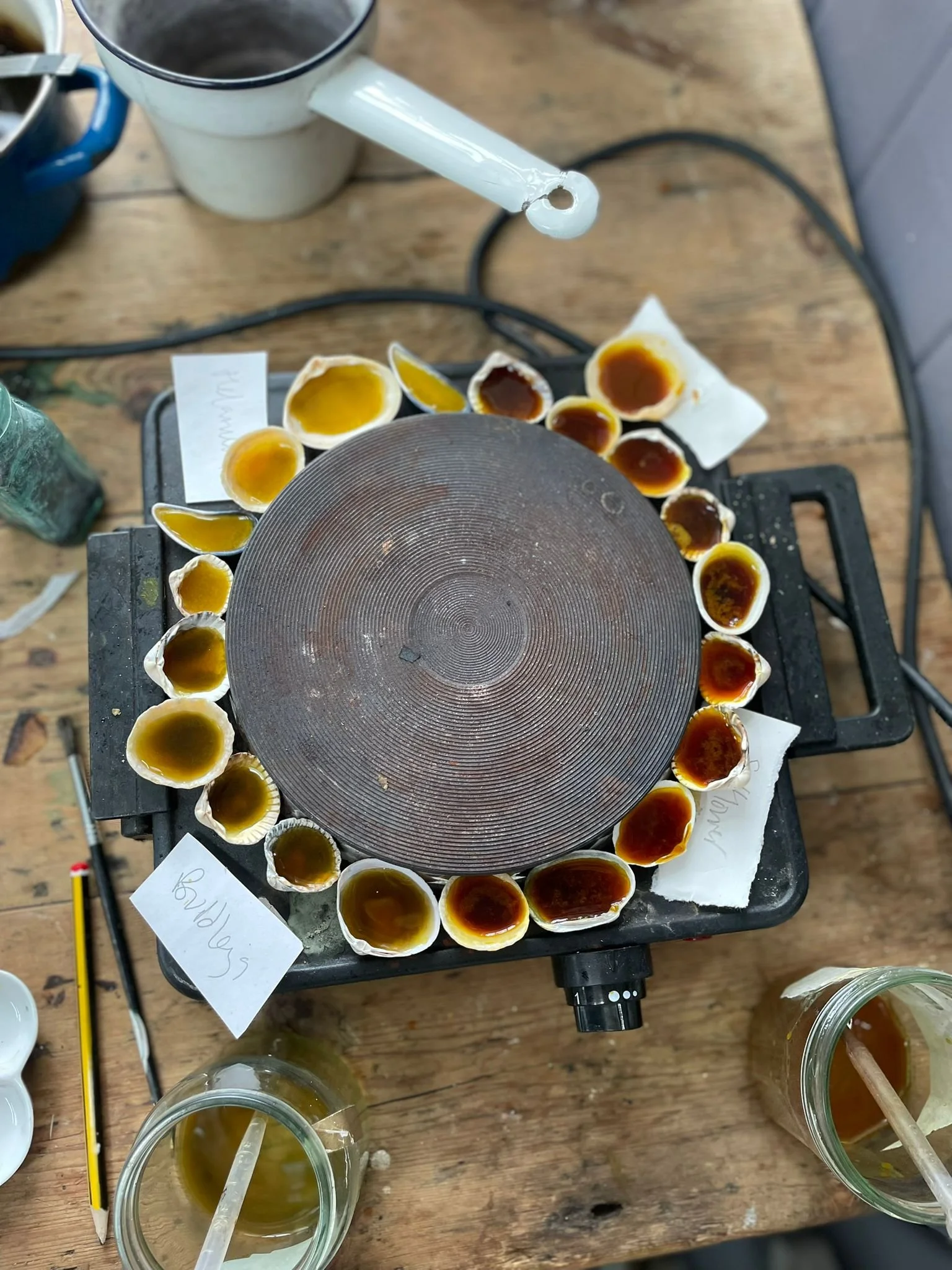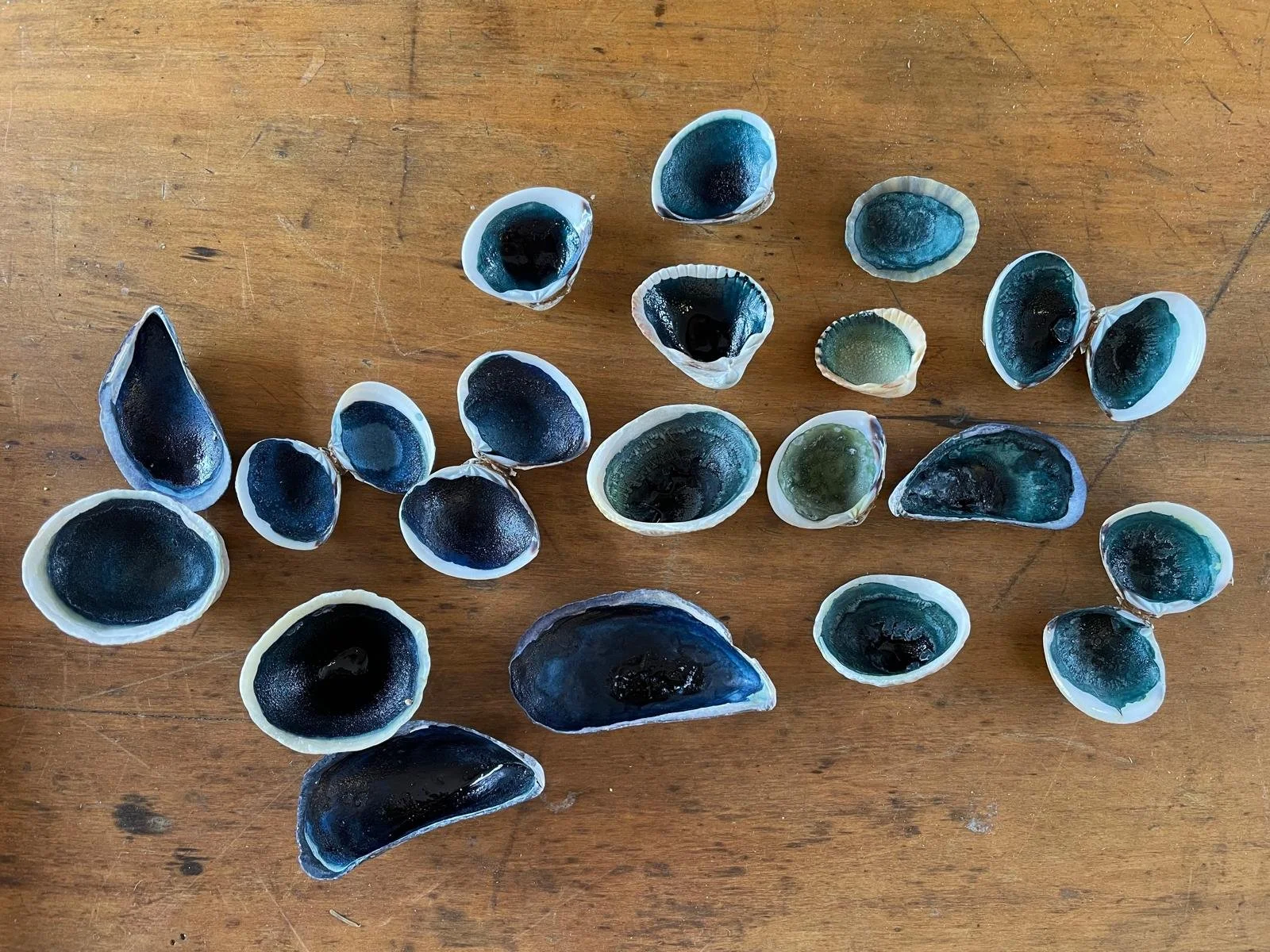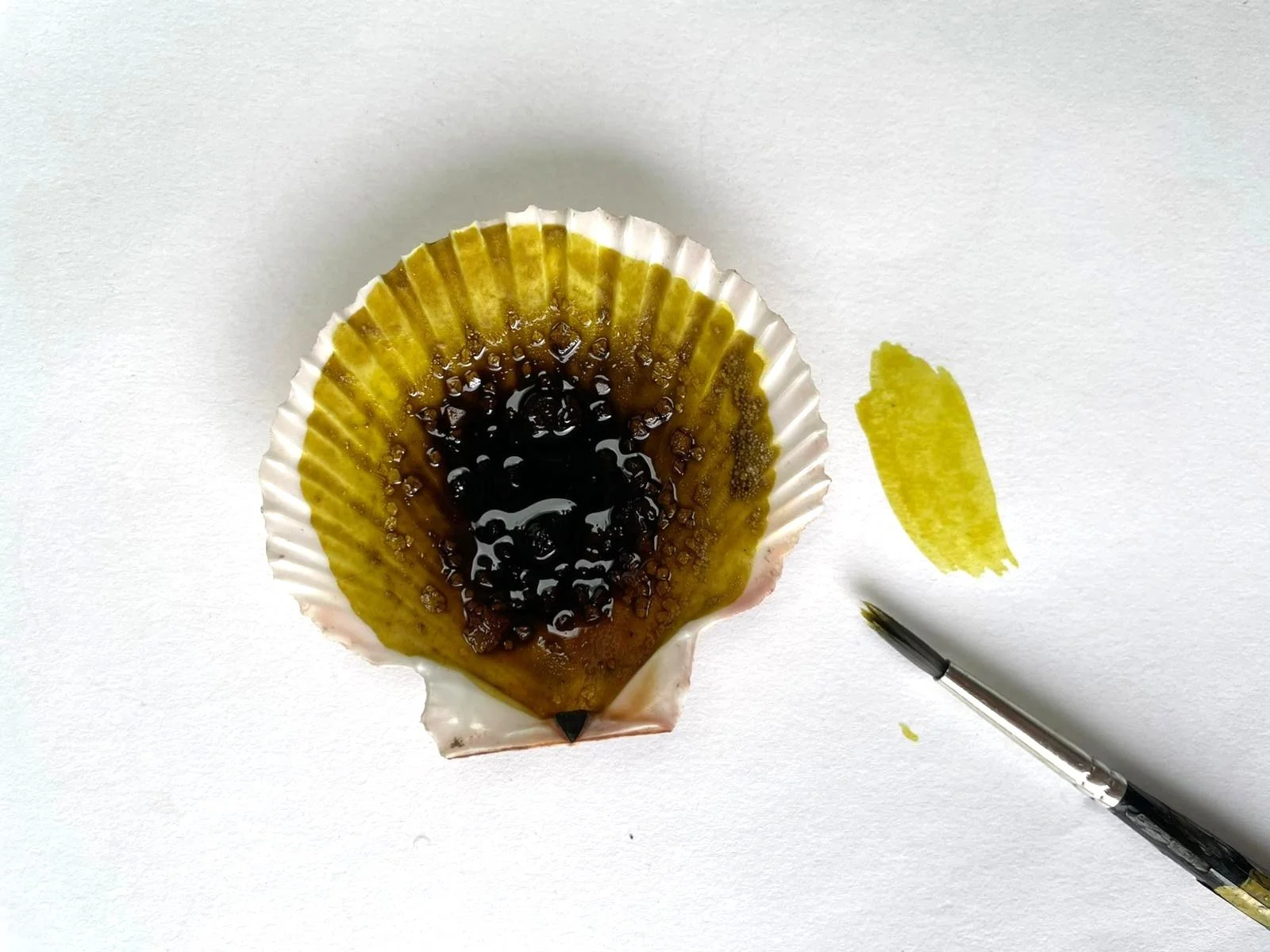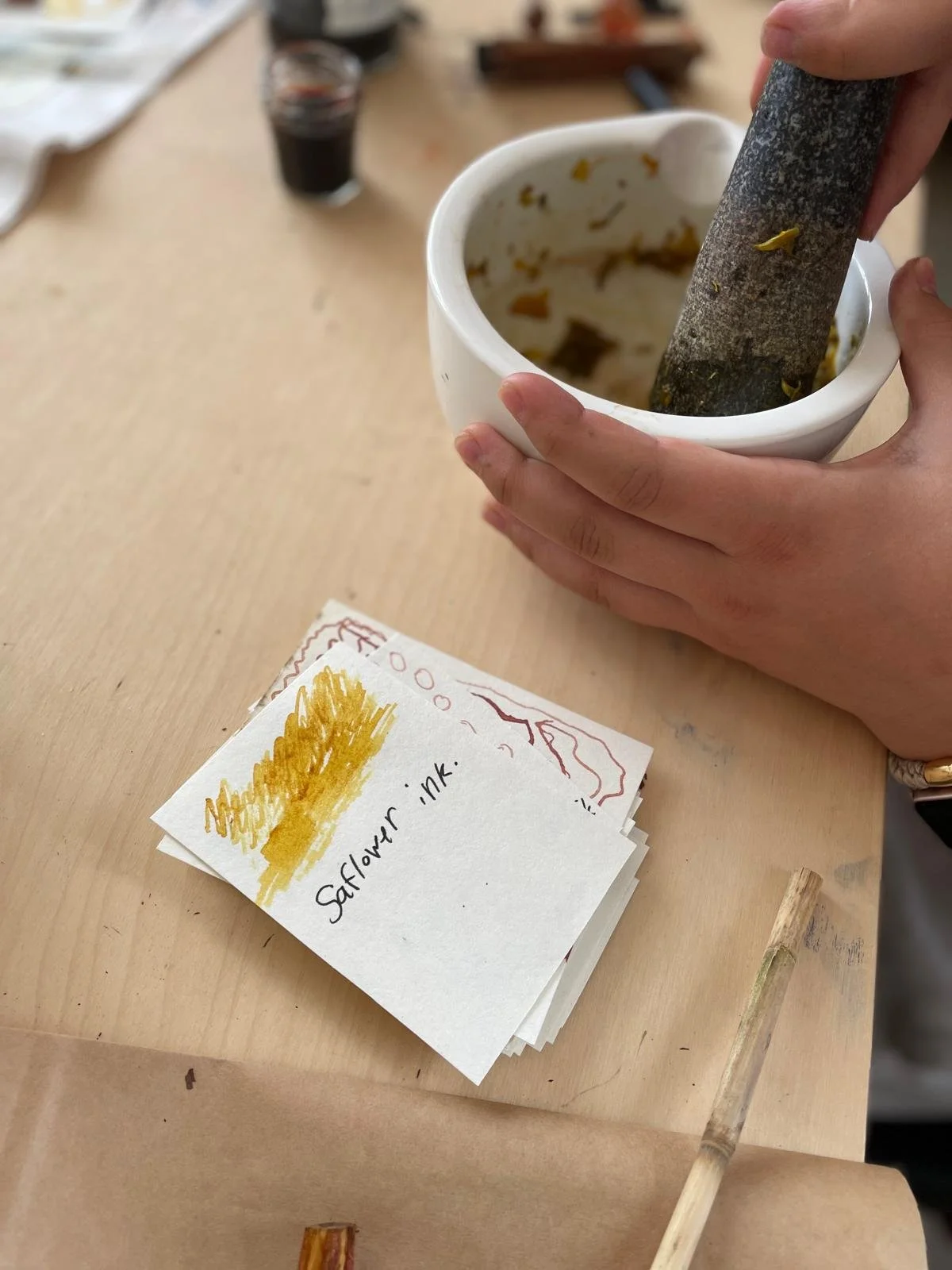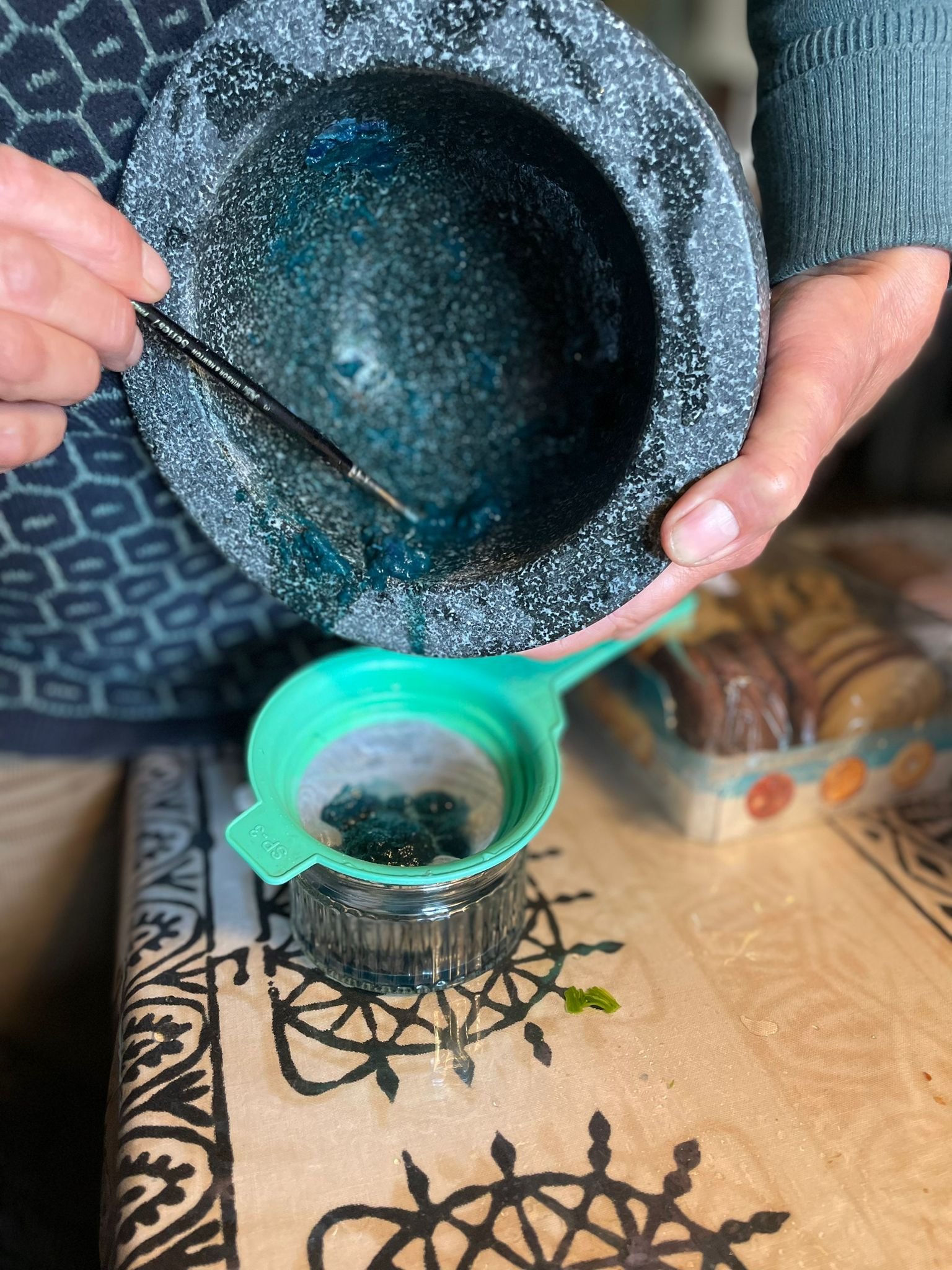How to achieve intense plant colours using only a pestle and mortar
Over the last couple of months, experiments have been happening with flower pigments.
In a process called inspissation*, colour compounds are drawn out of plants before being dried into a concentrate. This results, depending on the type of flower involved, in a very pigmented film of colour, often much more intense than an ink because there is no dilution with water.
*credit to Joumana Medley from her excellent book ‘Wild Inks and Paints’.
It is also a handy technique in so far as it only requires a mortar and pestle to achieve a satisfying outcome. In another historical method, the plant colour extract can also be soaked into small pieces of cloth and then reactivated in a little water which means they can be easily carried or stored for later use.
Some of the plants that we have been tried include grape hyacinth, gorse, fuchsia, celandine and iris. Apart from anything else, the dried out colours are very beautiful and, in of themselves, are a great way to enjoy the colours of flowers.
The method involves something called braying which describes the process of breaking up the flowers of choice in the mortar and pestle with a little water. A little alum sulfate is also recommended as this helps draw out the colour as well as brightening the hue.
This technique has an intriguing historical connection as this was the method applied in the creation of embellishments in illustrated manuscripts, when using colours from plants. Iris flowers in particular are mentioned from the 14th century on-wards, as a source of a both green and a blue colourant in decorating books.
We really love the historical aspect of what we do and how it connects us back through time using the same plants in this case. Medieval books are of particular interest and research into other organic pigments that were used in their making, continues.

